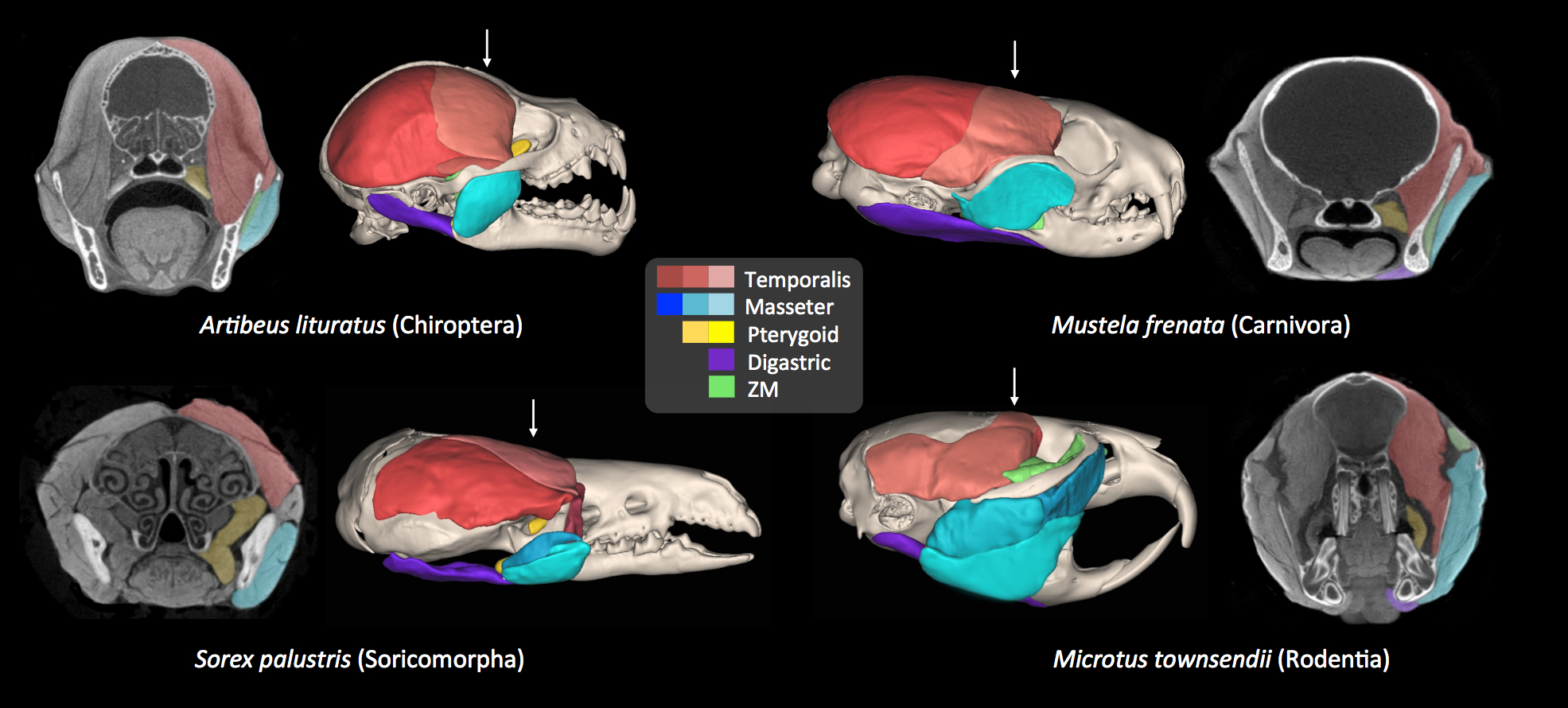
Many of the most outstanding vertebrate radiations were promoted by morphological specializations that enabled changes in feeding performance and diet. Mammals in general, and bats in particular, have expanded into a vast array of trophic niches, and possess an extraordinary diversity in the morphology and function of the feeding apparatus. This makes them an excellent system for investigating questions about ecomorphological patterns and mechanisms associated with lineage diversification.

In our lab, we integrate traditional and modern methods to study morphology (e.g., dissections, µCT-scanning, laser scanning, geometric morphometrics) with biomechanical modeling of the feeding apparatus. In parallel, we conduct studies of diet, feeding performance (e.g., bite force) and behavior in free-ranging organisms. Conducting these studies across diverse sets of species allows us to identify (1) which and how morphological differences result in changes in feeding performance, (2) how important behavioral modulation is in producing performance differences, (3) how the interplay between performance and behavior may produce ecological differences , and (4) how the evolution of these factors leads to increased speciation. Altogether, this research is helping us generate a better understanding of how ecomorphology relates to diversification in mammals.
Part of this work is funded by NSF award 1557125
